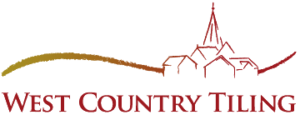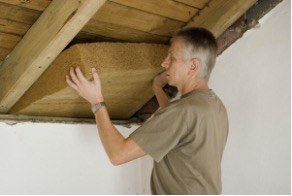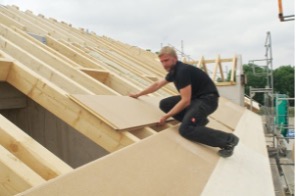When working on historically significant buildings, it is very important to choose the right modern materials for the project. We put a lot of thought into which materials we chose so that they compliment the structure rather than creating problems in the future.
Most of the historic buildings that we work on have some form of bat roost and so our roof design must incorporate these. One area of concern is the use of breather membranes and the type of insulation that we use if we are going to allow the building to continue to ‘breathe’ whilst still being bat-friendly.
Over recent years, we have found that the best solution is the Steico System. This consists of Steico Universal, a waterproof T&G board, on the top of the rafters, Steicoflex, a flexible insulation batt, between the rafters and Steico Protect, another rigid board insulation, on the underside of the rafters. Steico Protect is designed so that you can apply lime plaster directly to it.
The advantages of this system is that all three of the layers are vapour permeable and as the Universal is waterproof, no felt or breather membrane is required. In addition to this, their range of products are all made from recycled woodchip, so that ticks the eco box too.
We chose to source these products from Mike Wye, provider of traditional, ecological, and sustainable building and decorating specialist based in Devon.
Installing Steico Flex and Steico Universal
For insulating between the rafters with used Steicoflex, a vapour-permeable wood fibre insulation.
For insulating on top of the rafters we used Steico Universal sarking and sheathing insulation boards. Both wood fibre products are environmentally and bat friendly.
We are happy to be working with the team at Mike Wye, who deliver excellent customer service and high-quality products.
Why use West Country Tiling
If you require a reroof using sustainable and environmentally friendly materials, please get in touch on 01373462224 or by emailing us at info@westcountrytiling.com.


